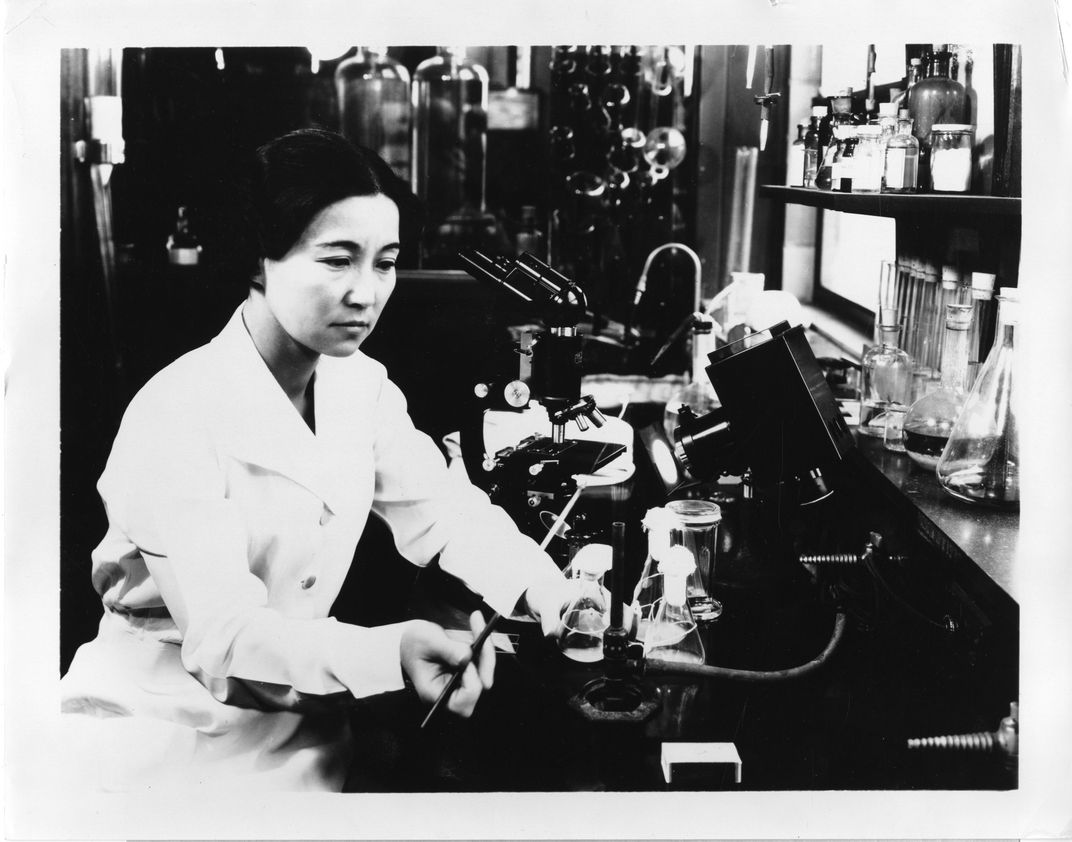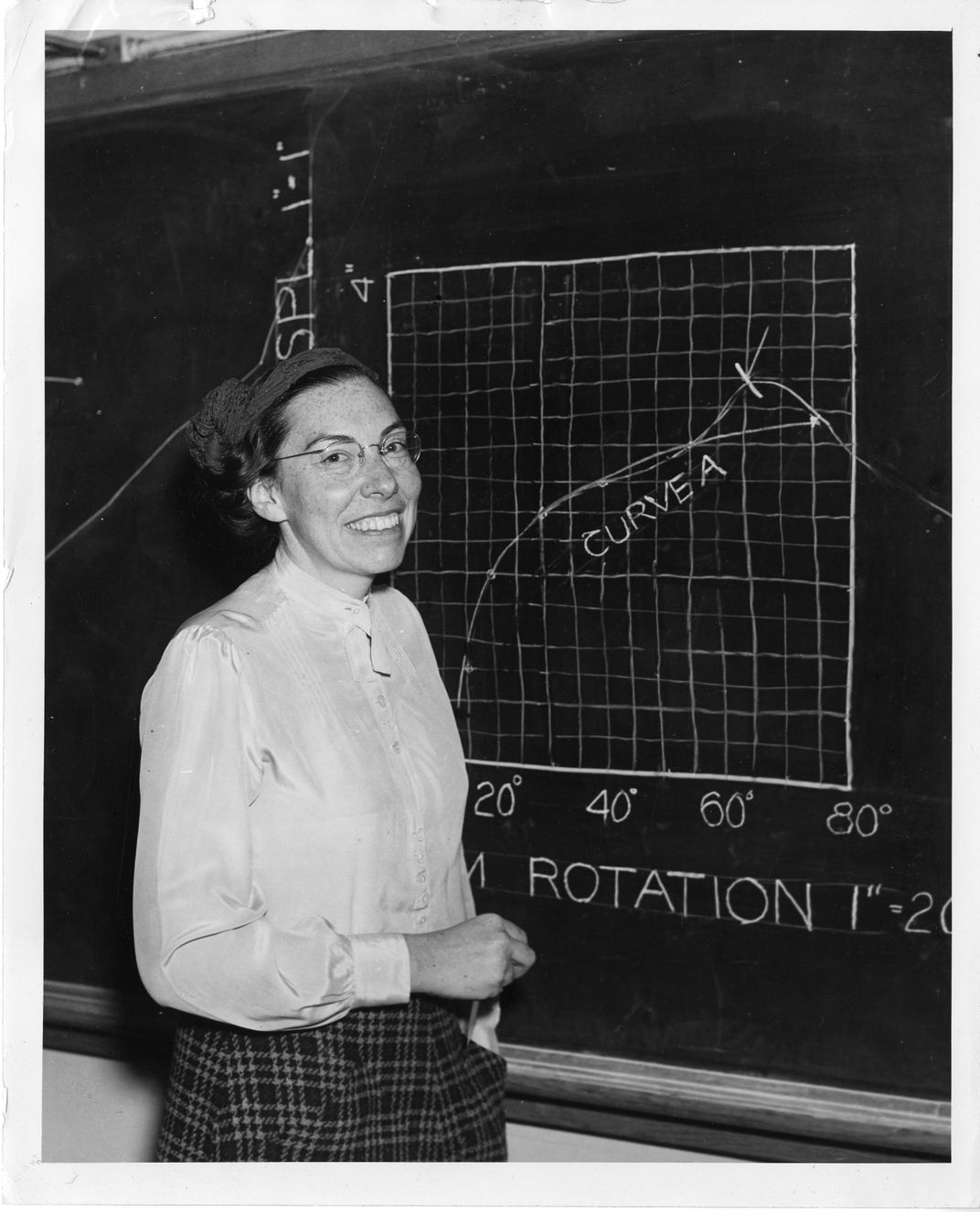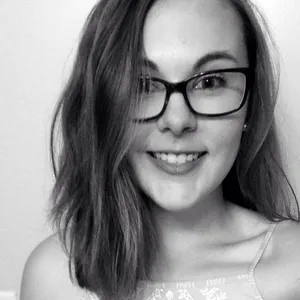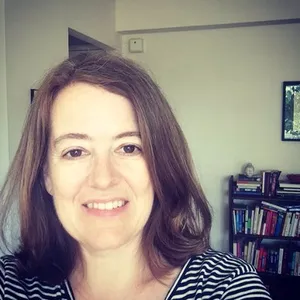AMERICAN WOMEN'S HISTORY INITIATIVE
Uncovering Hidden Stories
When an illustrator recently posted a blurry, black and white photo (below) of a group of scientists attending a 1971 whale biology conference, the question reverberated across Twitter. Who was the sole unidentified figure and only woman in the picture, partially hidden behind a male colleague?
:focal(351x95:352x96)/https://tf-cmsv2-smithsonianmag-media.s3.amazonaws.com/blogging/featured/participants.png)
Can you help me know her?
When an illustrator recently posted a blurry, black-and-white photo (below) of a group of scientists attending a 1971 whale biology conference, the question reverberated across Twitter. Who was the sole unidentified figure—and only woman—in the picture, partially hidden behind a male colleague?
At the Smithsonian Institution Archives, staff jumped on the query and confirmed that the woman was Sheila Minor (now Sheila Minor Huff), an African American biological research technician at the National Museum of Natural History in the early 1970s. The viral search resulted in a New York Times story and a new and growing Wikipedia page for Minor.
For the Archives, helping solve the mystery was all in a day’s work. Over the last decade, the team of Smithsonian research specialists has uncovered numerous stories of women scientists embedded in the Institution’s collections, files and data—an effort that has grown across multiple digital platforms.

A Call for Help
In 2009, Archives staff began marking Women’s History Month every year with a public call for help in identifying women scientists in a series of photographs taken from the 1920s through the 1970s. The photos were originally collected as part of a national science news service that occasionally covered the work of female scientists. Unfortunately, many of the women were unidentified or described on the backs of the photographs in scant detail, or only by their married name.
Marcel C. LaFollette, an Archives historian and research associate, helped get the project off the ground. “I realized that our records contained a trove of what we now label “hidden figures”—female scientists who had received little or no attention from historians,” she recalls. “These faces of women were a tiny percentage of the whole but the images were often riveting and, as we all dug deeper into their lives, their careers impressive.”
The public responded to the Archives’ request with enthusiasm, sending in obituaries, contemporary photos and family tree research, helping Smithsonian staff document the lives of the mystery scientists and enter pertinent information into a Flickr Commons set.
Scientists Ruby Hirose (pictured above) and Mary Blade (below) were among the many whose stories were filled in, shedding new light on a cadre of women who excelled in a range of scientific disciplines in the mid-20th century.

Raising Women’s Profiles
A second Archives effort—the “She Blinded Me with Science” Wikipedia project—launched in 2011 to create Wikipedia entries for women scientists not represented on the site, in part through holding regular edit-a-thons attended by the public. To date, the project has generated 75 entries and continues to grow. The public can now easily find biographical information on women like Mary Agnes Chase, a renowned expert on grasses and senior botanist at the Smithsonian in the 1930s, and Ursula Marvin, a planetary geologist who worked at the Smithsonian Astrophysical Observatory beginning in the 1960s.
A more recent social media campaign, Wonderful Women Wednesday, spotlights notable women currently working across the Smithsonian, in science and other disciplines. The series challenges stereotypes of fields that may be viewed as male-oriented and encourages the public to share stories of inspirational women.
“We’re proud to bring attention to the issue of representation of women in science,” says Effie Kapsalis, the Archives’ chief of content and communications strategy and digital strategy lead for the Smithsonian American Women’s History Initiative. “We’ve been raising the profile of these women by working with the crowd, and growing their online presence from a basic catalog record to rich profiles on Wikipedia and other websites, including our own.”
“Our goal is to get thousands more women recognized for their contributions to our world,” she says.
For more historical photos of women in science, visit the Smithsonian Institution Archives Science Service Flickr set.
Sign Up to Join the American Women's History Community
You'll get the latest news, updates and more delivered directly to your inbox.
The Smithsonian American Women's History Initiative is supported in part thanks to people like you. Make a gift now and help us amplify women's voices, reach the next generation, and empower women everywhere.


